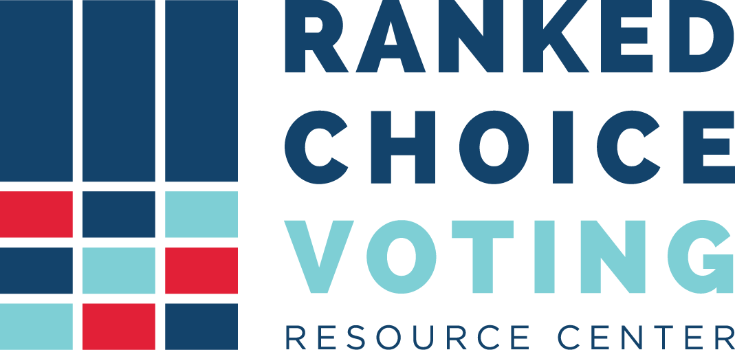ELECTION PLANNING
The election planning page seeks to help election administrators, candidates, the media, and voters understand and prepare for a ranked choice voting (RCV) election. We focus here on two main components of preparation: budgeting and voting equipment. In addition, we've provided sample language that can be included in a request for proposal (RFP) to ensure voting equipment allows for RCV.
BUDGETING
Running elections can be expensive, and accounting for all of the costs of an election requires broad knowledge and understanding of the tasks of an election official. States vary tremendously in their administration of elections, so costs vary widely. This will also be the case for RCV.
RCV impacts election costs in a number of ways. It can decrease costs through the elimination of the following:
- Runoffs
- Second primaries
- Off-cycle primaries
Research has also shown that RCV may decrease the amount of money candidates themselves spend on elections. RCV can, however, increase costs in these areas:
- upgrading election systems
- voter education and outreach
- candidate education and outreach
- poll worker training
Minneapolis and the Bay Area cities that adopted RCV eliminated primary and runoff elections, respectively, saving the cities the large expense required for those low-turnout elections. However, they each had to invest in upgrading their election systems through software or hardware upgrades and invest heavily in voter education and poll worker training.
Resources available on this page can help you understand what costs may be associated with upgrading to RCV (the two-pager linked below) and provide actual cost data from jurisdictions using RCV. If you have specific questions about budgeting for RCV, please send us a message on our Contact Us page.
RESOURCES
RCV Clips episode: Budgeting for an RCV Election (March 2022)
The Cost of Conducting a Ranked Choice Voting Election two-pager (2018)
Telluride "Costs and Outcomes" Memo on RCV Implementation (2016)
RCV Resource Center Analysis of Maine RCV Costs (2016)
Maine Ranked Choice Voting Costs Assessment (2014)
VOTING EQUIPMENT
Election systems vendors have varying levels of RCV capability integrated into their systems. Most of the major vendors (Election Systems and Software, Dominion, and Hart InterCivic) have systems used in at least one U.S. jurisdiction using RCV. Those systems are overwhelmingly optical scan-based, but direct-recording electronic (DRE) systems have been used in the past for RCV. Unisyn, another vendor, has a system that can run RCV elections, but that RCV capability is not currently used in any U.S. elections. Finally, San Francisco, CA, is looking into building its own open-source elections system, which would require RCV capability. It would likely be the first open-source election system with native RCV capability.
Implementation of RCV With Multiple Voting Systems
Most states in the United States have several different types of voting systems used for their elections. Some states have a number of different voting systems manufactured by different vendors. Others use one single vendor but have different models of voting equipment from that vendor. This report outlines potential implementation models for states based on their voting system setup. Also available is a table outlining the current RCV capabilities of the voting systems available from the four largest voting system vendors: Dominion, Election Systems & Software, Hart InterCivic, and Unisyn.
RESOURCES
Table of Voting System RCV Capability (2019)
Implementing RCV Statewide and Across Jurisdictions When Multiple Voting Systems Are Used (2017)
Alternate Solutions
While some election systems can count an RCV election internally (meaning they require no extra components, computers, or applications to record and count ranked ballots), others require external applications to complete the counting. In order to use an efficient alternate counting solution, voting equipment must be able to export a complete cast vote record (CVR) of all votes cast on that equipment during an election. We are producing a report on which election equipment is capable of CVR exports to help jurisdictions decide whether to upgrade their voting equipment or to continue with their current equipment. Choice Plus Pro, an RCV tabulation application developed for Cambridge, MA, has been used in Takoma Park, MD; Burlington, VT; Aspen, CO; and Portland, ME, in addition to providing multi-winner vote tabulation services in Cambridge. Additionally, the Ranked Choice Voting Resource Center (RCVRC), in conjunction with Brightspots, has developed a customizable RCV counting application, RCTab.
Sign up for updates from RCVRC to learn more about our counting application and as additional content is added to the Resource Center.
SAMPLE RFP/RFI - VOTING EQUIPMENT
A request for proposal (RFP) specifies the needs of a jurisdiction that a voting system manufacturer will have to meet to be considered for a bid. When jurisdictions post RFPs for any new voting equipment, including language for a system to be RCV ready can ensure that capability will be available, whether or not the jurisdiction has adopted RCV at the time of the RFP.
The document linked below lays out all the major components to consider when reviewing a voting system for RCV capabilities. Jurisdictions should review this document and consider including its content within any voting system RFPs or RFIs they publish. If you would like to create a more customized version of this document with requirements specific to any RCV rules adopted in your jurisdiction, feel free to contact the RCV Resource Center at info@rcvresources.org and we can help you draft that request.

